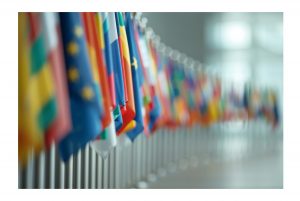Streamlining Diplomatic Project Management & Centralizing Budget Oversight in the European Union’s Foreign Affairs Service

OVERVIEW
Client
European External Action Service (EEAS)
Industry
Government & public sector
Type of Projects
IT
Challenge
The European External Action Service (EEAS) grappled with scattered and unstructured project data, making it challenging to oversee project progress and financials. Without a centralized system or a coherent follow-up strategy, managing the growing responsibilities and ensuring efficient project execution became increasingly difficult.
Solution
The solution for the EEAS involved implementing a centralized system to consolidate project tracking on a single platform, integrating timesheets for detailed resource allocation and progress tracking, and setting up configured parameters to effectively monitor project budgets.
The CUSTOMER:
The European External Action Service (EEAS) functions as the diplomatic service and foreign policy arm of the European Union. Tasked with a broad spectrum of responsibilities, the EEAS is pivotal in shaping the EU’s external relations and policies. It ensures that Europe’s strategic interests and values are represented worldwide, manages the EU’s response to global crises, and works to promote international stability and prosperity. As a vital component of the EU’s administrative structure, the EEAS’s effectiveness is foundational to the Union’s global influence and operations.

The CHALLENGE:
The EEAS’s IT department was grappling with the challenge of managing a vast array of projects without a centralized tracking system, resulting in unorganized project data and difficulty in overseeing project progress and budgets. As responsibilities increased, the need for an efficient method to monitor a growing number of diverse activities became crucial. The department’s existing processes were insufficient for the task at hand, creating a bottleneck in resource allocation and lacking a consistent follow-up methodology on projects. This absence of a streamlined approach was becoming a barrier to the effective execution and strategic planning of the agency’s multifaceted diplomatic missions.

The SOLUTION:
To tackle the inefficiencies and disjointed practices, the EEAS rolled out Cerri Project’s centralized project management system. Cerri Project was engineered to bring together all project data onto one cohesive platform, enhancing the ability to track, manage, and report on every aspect of a project’s life cycle. It incorporated timesheets for real-time resource allocation and progress assessment, along with sophisticated budget monitoring capabilities. The bespoke configuration of Cerri Project was tailored to meet the precise needs of the EEAS, providing a robust framework for financial oversight.

The RESULTS:
The implementation of Cerri Project yielded immediate and tangible benefits for the EEAS. It streamlined the project management process, leading to considerable time and cost efficiencies. Cerri Project’s unified platform gave the IT department a comprehensive view of all project activities, optimizing resource distribution and project timelines. This newfound efficiency not only accelerated project delivery but also ensured adherence to budgetary constraints. Standardization of processes through Cerri Project facilitated the adoption of industry best practices, significantly elevating the quality of project management. Armed with powerful tracking and reporting functionalities, the EEAS could now make more informed and strategic decisions, setting the stage for further expansion of Cerri Project’s utilization within the agency for broader operational improvements.





 Task Management
Task Management 

















 Customization
Customization
